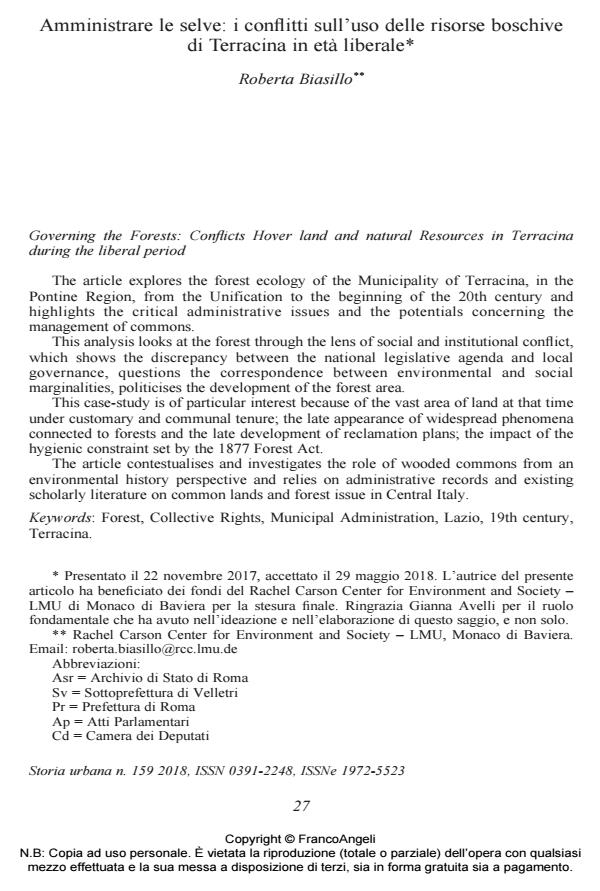Governing the Forests: Conflicts Hover land and natural Resources in Terracina during the liberal period
Journal title STORIA URBANA
Author/s Roberta Biasillo
Publishing Year 2018 Issue 2018/159
Language Italian Pages 27 P. 27-53 File size 122 KB
DOI 10.3280/SU2018-159002
DOI is like a bar code for intellectual property: to have more infomation
click here
Below, you can see the article first page
If you want to buy this article in PDF format, you can do it, following the instructions to buy download credits

FrancoAngeli is member of Publishers International Linking Association, Inc (PILA), a not-for-profit association which run the CrossRef service enabling links to and from online scholarly content.
The article explores the forest ecology of the Municipality of Terracina, in the Pontine Region, from the Unification to the beginning of the 20th century and highlights the critical administrative issues and the potentials concerning the management of commons. This analysis looks at the forest through the lens of social and institutional conflict, which shows the discrepancy between the national legislative agenda and local governance, questions the correspondence between environmental and social marginalities, politicises the development of the forest area. This case-study is of particular interest because of the vast area of land at that time under customary and communal tenure; the late appearance of widespread phenomena connected to forests and the late development of reclamation plans; the impact of the hygienic constraint set by the 1877 Forest Act. The article contestualises and investigates the role of wooded commons from an environmental history perspective and relies on administrative records and existing scholarly literature on common lands and forest issue in Central Italy.
Keywords: Forest, Collective Rights, Municipal Administration, Lazio, 19th century, Terracina.
Roberta Biasillo, Amministrare le selve: i conflitti sull’uso delle risorse boschive di Terracina in età liberale in "STORIA URBANA " 159/2018, pp 27-53, DOI: 10.3280/SU2018-159002